A captivating array of eleven white birds with long beaks graces diverse ecosystems in North America, each species presenting a unique spectacle of avian elegance and adaptation.
From the Arctic tundra to the coastal wetlands, these birds navigate a range of habitats, contributing to the ecological tapestry of the continent.
Their striking white plumage and distinctive long beaks set them apart, capturing the attention of bird enthusiasts and conservationists alike.
In this exploration, we delve into the lives of these remarkable birds, unveiling their roles in their respective environments and the conservation challenges they face.
From the graceful Great Egret stalking prey in shallow waters to the aerial prowess of the Masked Booby in tropical seas, each species paints a vivid picture of survival and resilience.
Join us on a journey through North America’s skies and waterways as we unravel the stories of these eleven white birds, understanding their significance in the intricate web of nature and the ongoing efforts to protect and preserve their habitats.
11 White Birds with Long Beaks of North America
Here, we’ll start a journey through marshes, coastlines, and open waters as we unravel the stories of 11 beautiful birds with long beaks of North America:
1. Snowy Egret (Egretta thula)
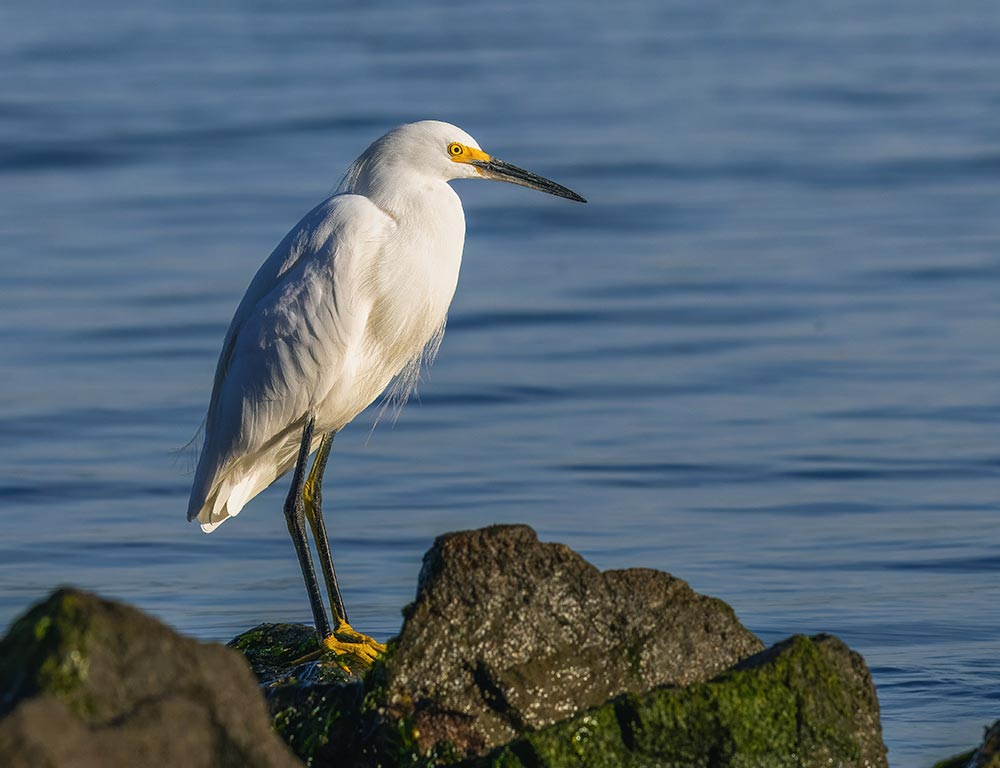
- Scientific name: Egretta thula
- Population: Varies, but generally stable
- Life span: Up to 15 years
- Size: 22-26 inches
- Weight: 13-21 ounces
- Food: Fish, crustaceans, insects
The Snowy Egret, with its elegant white plumage and distinctive long, slender black legs and yellow feet, inhabits North American coastal regions.
These skilled hunters employ their long, sharp beaks to deftly snatch fish, crustaceans, and insects from the water.
Often observed wading in shallow waters, they patiently wait before making precise strikes with their bills. Their populations remain generally stable, benefitting from conservation efforts and protective measures.
2. Cattle Egret (Bubulcus ibis)
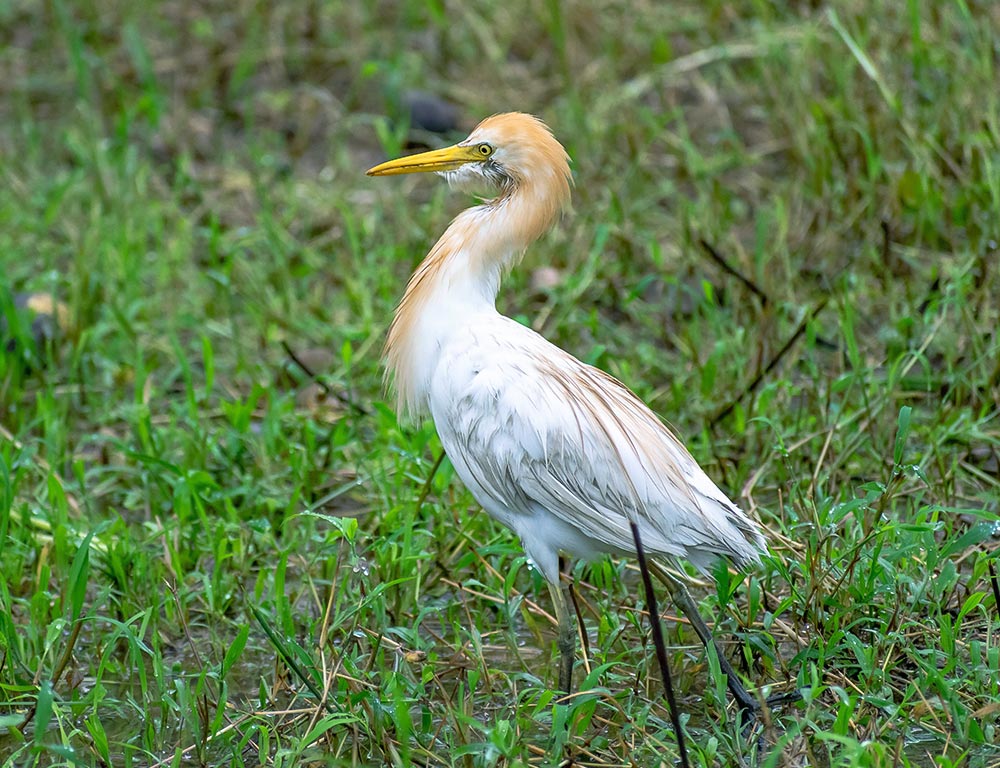
- Scientific name: Bubulcus ibis
- Population: Large and widespread
- Life span: 9-10 years
- Size: 18-22 inches
- Weight: 8-19 ounces
- Food: Insects, ticks, small vertebrates
The Cattle Egret, characterized by its compact size, white plumage, and a yellow-orange bill, is often seen foraging near livestock.
This bird forms mutualistic relationships with cattle, feeding on insects and ticks that pester the larger animals.
With a penchant for following plows and tractors, they capitalize on disturbed soil to catch exposed prey. Their adaptability and thriving populations highlight their success in both natural and man-made environments.
3. Whooping Crane (Grus americana)
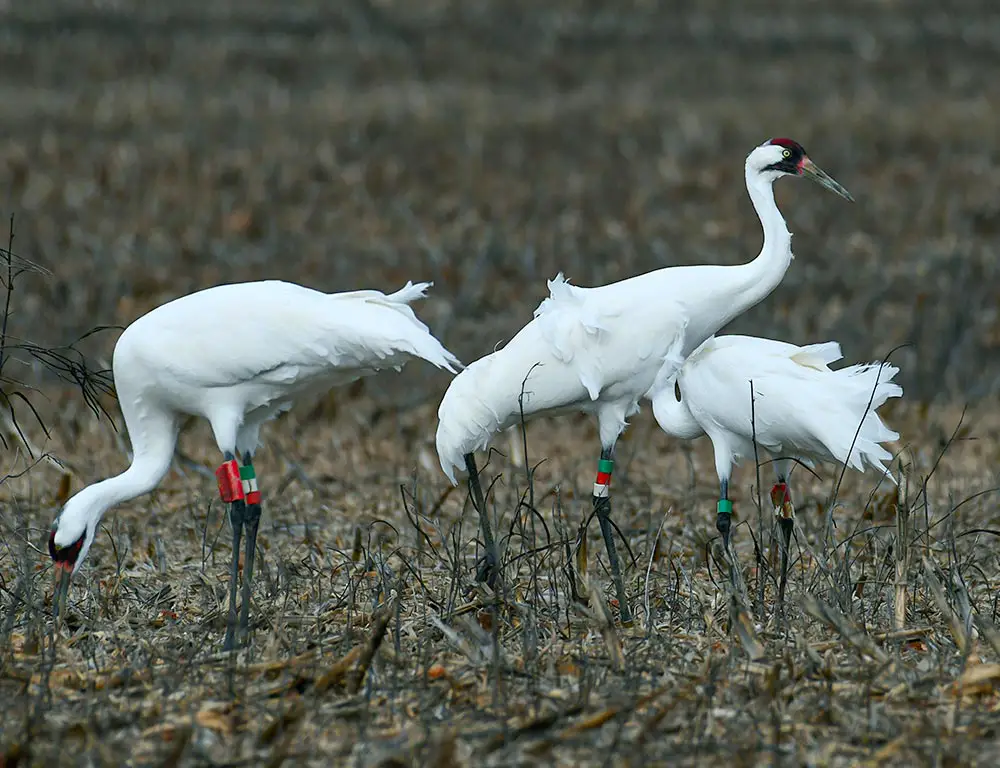
- Scientific name: Grus americana
- Population: Critically endangered, with conservation efforts ongoing
- Life span: 22-30 years
- Size: 5-5.5 feet tall
- Weight: 13-17 pounds
- Food: Aquatic invertebrates, small vertebrates, grains
The Whooping Crane, North America’s tallest bird, boasts striking white plumage with black wingtips and a distinctive red crown.
Unfortunately, they face critical endangerment, with dedicated conservation programs striving to protect and increase their numbers.
Migratory in nature, these majestic cranes traverse vast distances, relying on wetlands for feeding. Their diet comprises aquatic invertebrates, small vertebrates, and grains.
Breeding efforts in controlled environments contribute to the ongoing struggle to preserve this iconic species, symbolizing the importance of conservation in safeguarding biodiversity.
4. American White Pelican (Pelecanus erythrorhynchos)
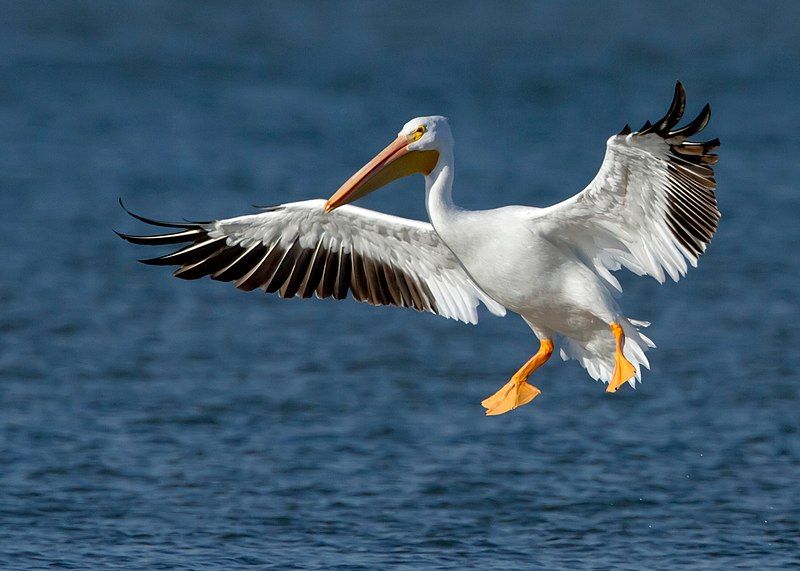
- Scientific name: Pelecanus erythrorhynchos
- Population: Stable
- Life span: 10-25 years
- Size: 5.9-6.9 feet wingspan
- Weight: 9-30 pounds
- Food: Fish, sometimes small birds
The American White Pelican, characterized by its immense size and distinctive long bill, inhabits freshwater lakes across North America.
With a sizable wingspan, they are skilled soarers, often seen in large groups during migration. Employing cooperative feeding techniques, they corral fish into shallow waters, making for efficient foraging.
Their populations remain stable, thanks to conservation efforts and habitat protection. These majestic birds are known for their graceful flight and communal behaviors, offering a spectacle to bird enthusiasts and wildlife observers alike.
5. Little Blue Heron (Egretta caerulea)
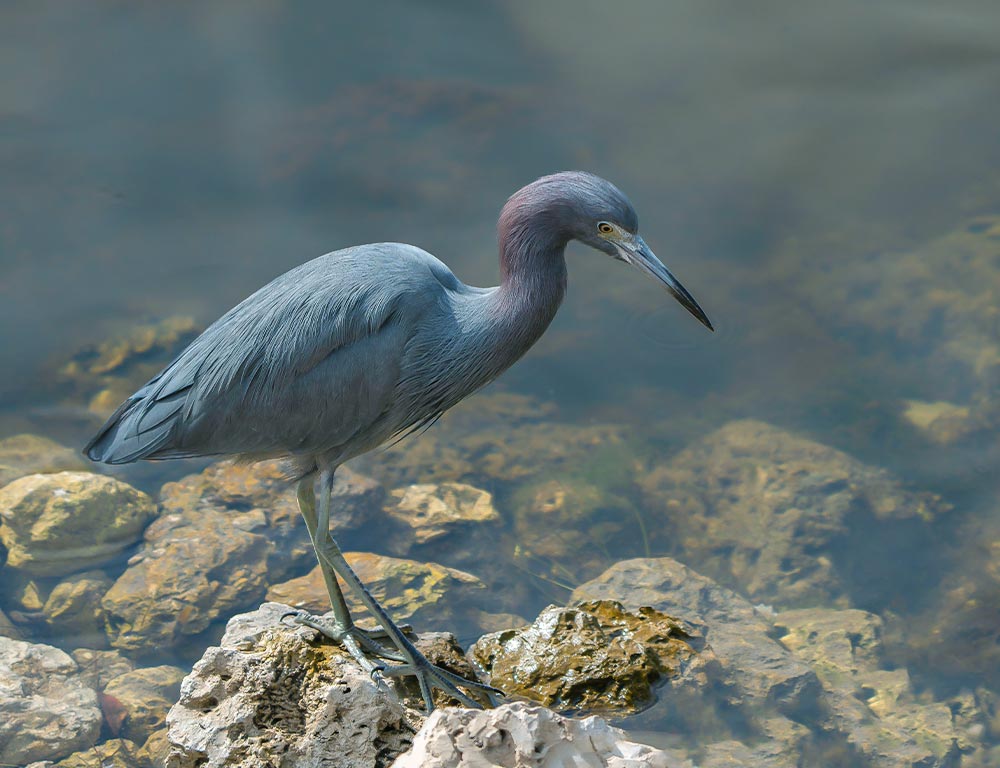
- Scientific name: Egretta caerulea
- Population: Stable
- Life span: 7-15 years
- Size: 22-30 inches
- Weight: 13-23 ounces
- Food: Fish, amphibians, crustaceans
The Little Blue Heron, with its distinctive blue-gray plumage, gradually transitioning from white during its youth, is a common sight in marshes and coastal areas.
Equipped with a slender, pointed bill, they adeptly hunt fish, amphibians, and crustaceans. Often solitary in their foraging pursuits, these herons patiently stalk prey in shallow waters, relying on their stealth and agility.
With a stable population, they contribute to the vibrant ecosystems they inhabit, showcasing the delicate balance of wetland habitats.
6. American White Ibis (Eudocimus albus)
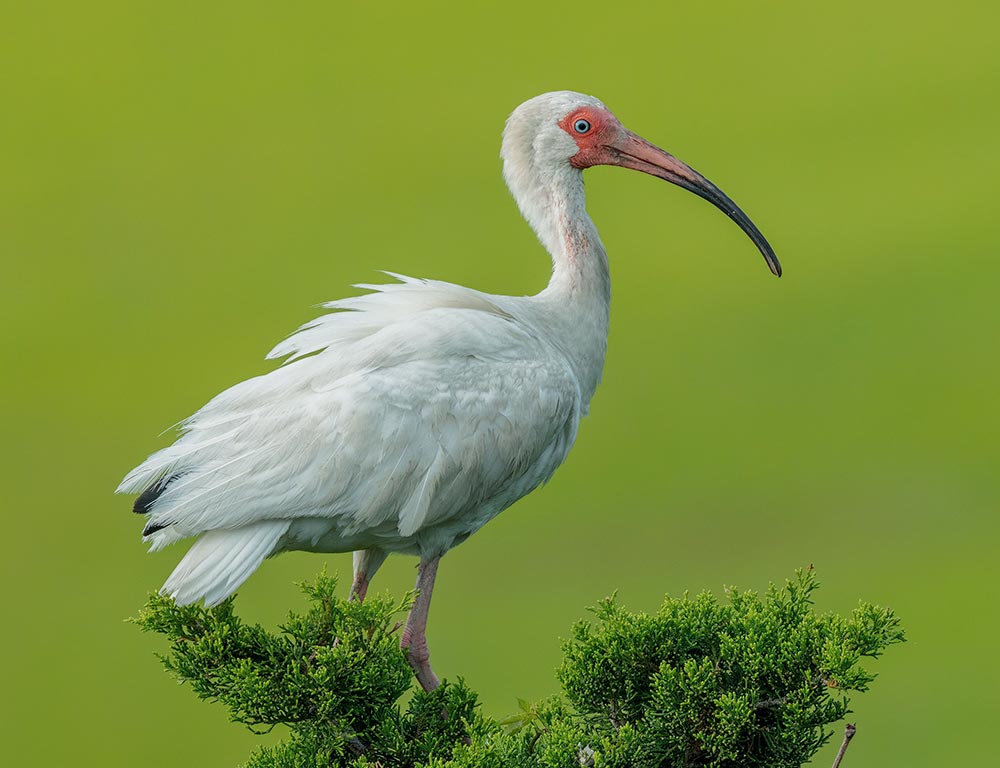
- Scientific name: Eudocimus albus
- Population: Stable
- Life span: 10-15 years
- Size: 22-27 inches
- Weight: 1.5-2.6 pounds
- Food: Crustaceans, insects, small vertebrates
The American White Ibis, with its striking white plumage and distinctive long, down-curved bill, is a common sight in wetlands and coastal areas.
Forming large flocks, they probe the mud for crustaceans, insects, and small vertebrates. Their social nature extends to nesting colonies, where they exhibit synchronized breeding behaviors.
With a stable population, these adaptable birds demonstrate resilience in various habitats, contributing to the biodiversity of their surroundings.
7. Wood Stork (Mycteria americana)
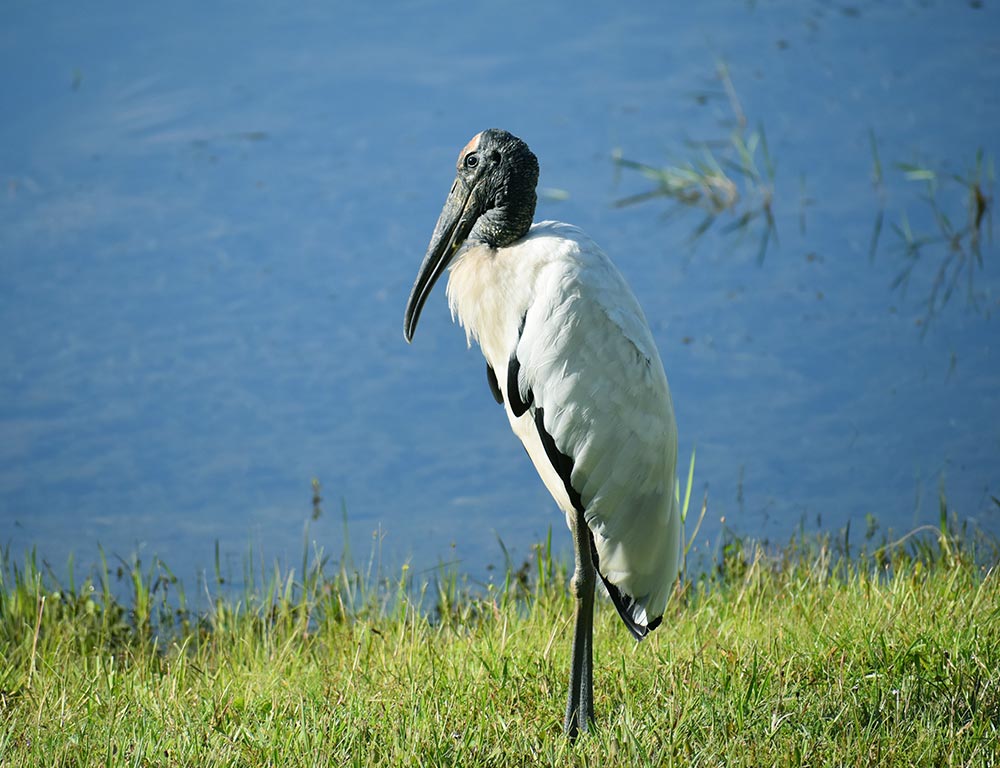
- Scientific name: Mycteria americana
- Population: Declining, with conservation efforts ongoing
- Life span: Up to 20 years
- Size: 33-45 inches
- Weight: 5-6 pounds
- Food: Fish, amphibians, insects
The Wood Stork, recognized by its distinctively bald head and long, down-curved bill, is a large wading bird often found in wetlands and swamps.
With a unique feeding method known as “tactile location,” they rely on touch to detect prey in shallow waters, primarily fish, amphibians, and insects.
Unfortunately, their populations are declining, leading to ongoing conservation efforts to protect their habitats and breeding sites.
Their significant size and distinctive appearance make them key contributors to the ecological balance of their chosen habitats.
8. Reddish Egret (Egretta rufescens)
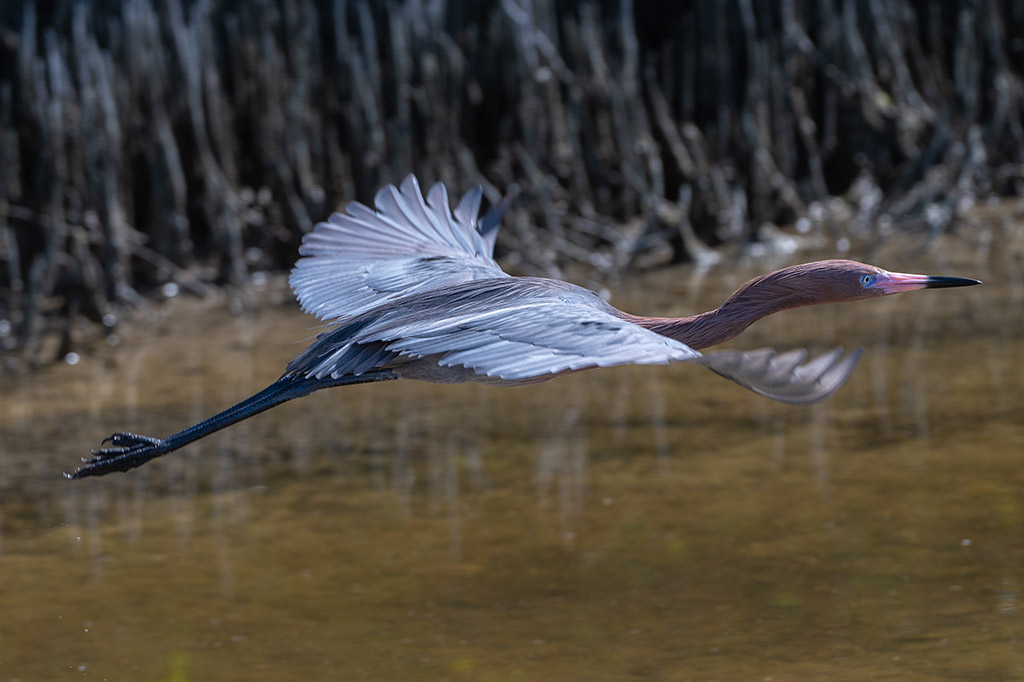
- Scientific name: Egretta rufescens
- Population: Varies, some populations declining
- Life span: 7-15 years
- Size: 27-32 inches
- Weight: 13-24 ounces
- Food: Fish, crustaceans, insects
The Reddish Egret, distinguished by its striking reddish-brown plumage and active foraging behavior, is commonly found in coastal areas and estuaries.
With an animated hunting style, including jumping, running, and spreading its wings to create shade, this egret demonstrates remarkable agility while pursuing fish, crustaceans, and insects.
While some populations face decline, conservation efforts aim to address habitat threats. Known for their entertaining and unique hunting techniques, these birds contribute to the dynamic diversity of coastal ecosystems.
9. Great Egret (Ardea alba)
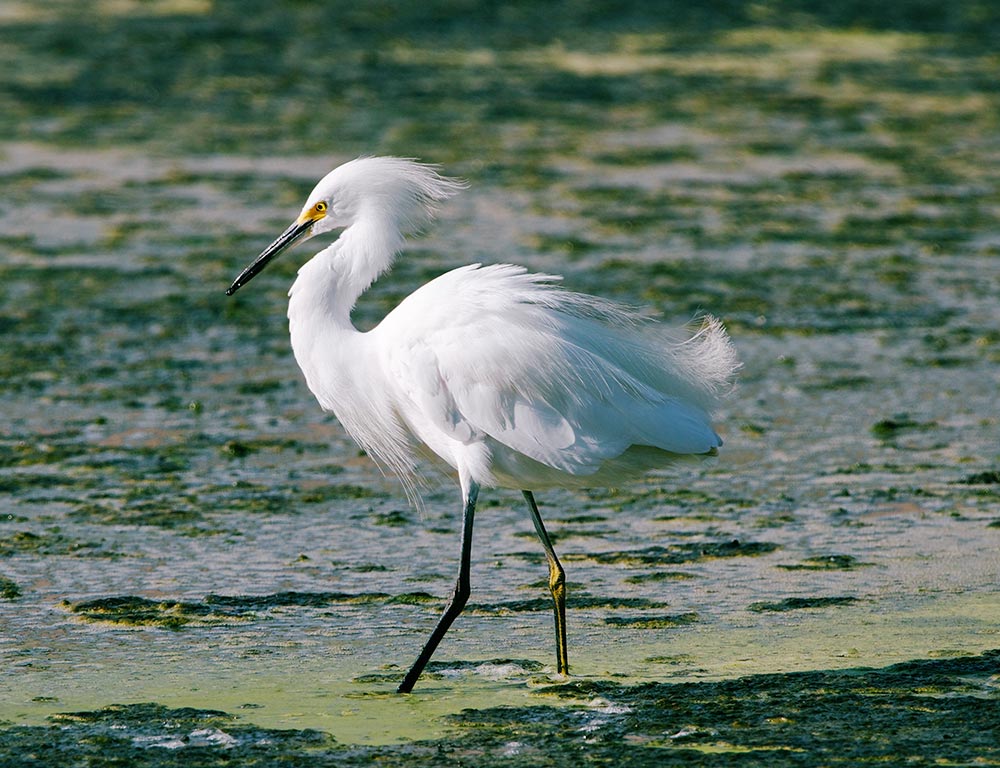
- Scientific name: Ardea alba
- Population: Stable
- Life span: 15-20 years
- Size: 37-41 inches
- Weight: 2-3 pounds
- Food: Fish, amphibians, reptiles, insects
The Great Egret, an elegant wader with pristine white plumage and a long, graceful neck, is commonly found in both freshwater and saltwater habitats.
With a wingspan reaching over four feet, they patiently stalk their prey in shallow waters, including fish, amphibians, reptiles, and insects. Renowned for their skilled hunting techniques, these birds often stand motionless before striking with precision.
Their stable population is a testament to their adaptability and successful conservation efforts, contributing to the rich biodiversity of wetland ecosystems.
10. Masked Booby (Sula dactylatra)
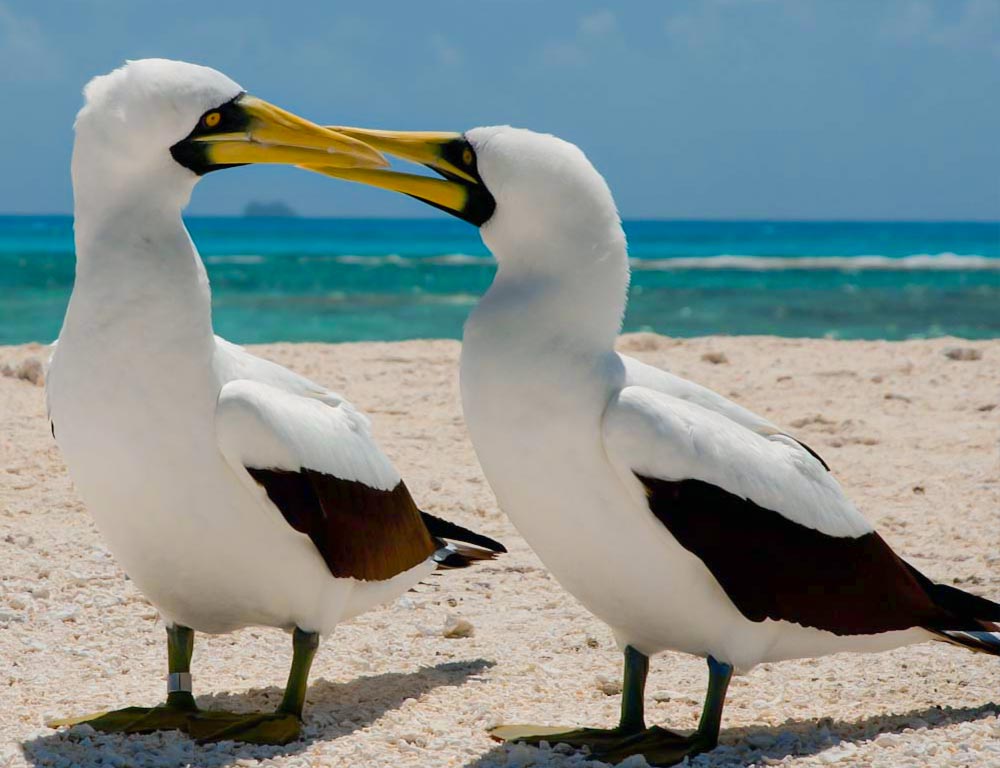
- Scientific name: Sula dactylatra
- Population: Varies, some populations declining
- Life span: 15-20 years
- Size: 28-37 inches
- Weight: 2.5-3.5 pounds
- Food: Fish, squid
The Masked Booby, recognized by its striking black facial mask and predominantly white plumage, is a seabird often found in tropical and subtropical regions.
With exceptional aerial skills, they dive from great heights into the ocean to catch fish and squid. Unfortunately, some populations decline due to habitat degradation and human disturbance.
Conservation efforts focus on protecting their nesting sites on remote islands. These skilled flyers play a vital role in marine ecosystems, showcasing the delicate balance of life in the open ocean.
11. Trumpeter Swan (Cygnus buccinator)
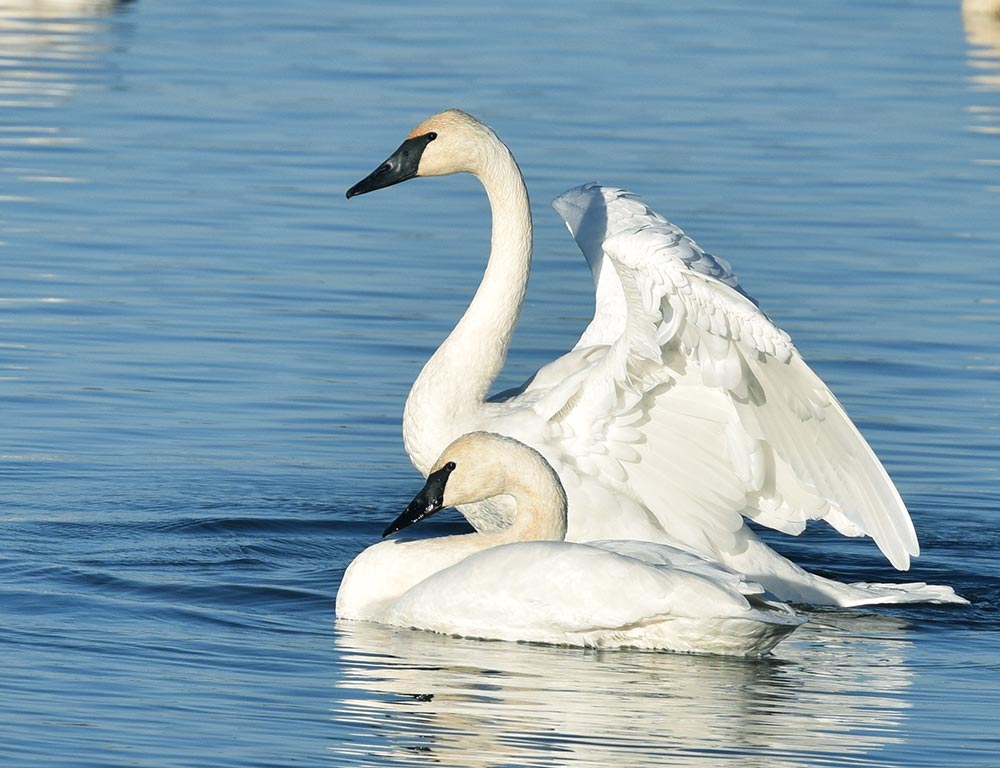
- Scientific name: Cygnus buccinator
- Population: Increasing, conservation success
- Life span: 20-30 years
- Size: 4.8-5.5 feet wingspan
- Weight: 21-30 pounds
- Food: Aquatic plants, grains
The Trumpeter Swan, North America’s largest waterfowl, is characterized by its majestic white plumage and distinctive trumpeting calls.
After facing near-extinction in the early 20th century, successful conservation efforts have led to a population rebound. With a wingspan exceeding five feet, they migrate long distances and are often observed in freshwater habitats.
Their diet consists primarily of aquatic plants and grains, and they contribute to ecosystem health by influencing vegetation and providing habitat for other species.
The recovery of Trumpeter Swan populations exemplifies the positive impact of conservation initiatives on keystone species in their respective ecosystems.
Wrapping Up
The diverse array of white birds with long beaks in North America showcases the richness and resilience of avian life.
From the elegant Snowy Egret and stoic Great Egret to the aerial prowess of the Masked Booby and the recovery of the Trumpeter Swan, each species plays a unique role in their ecosystems.
These birds navigate varied habitats, demonstrating adaptability and contributing to the delicate balance of nature.
While some face conservation challenges, concerted efforts to protect their habitats and address threats have led to population stabilization and recovery successes.